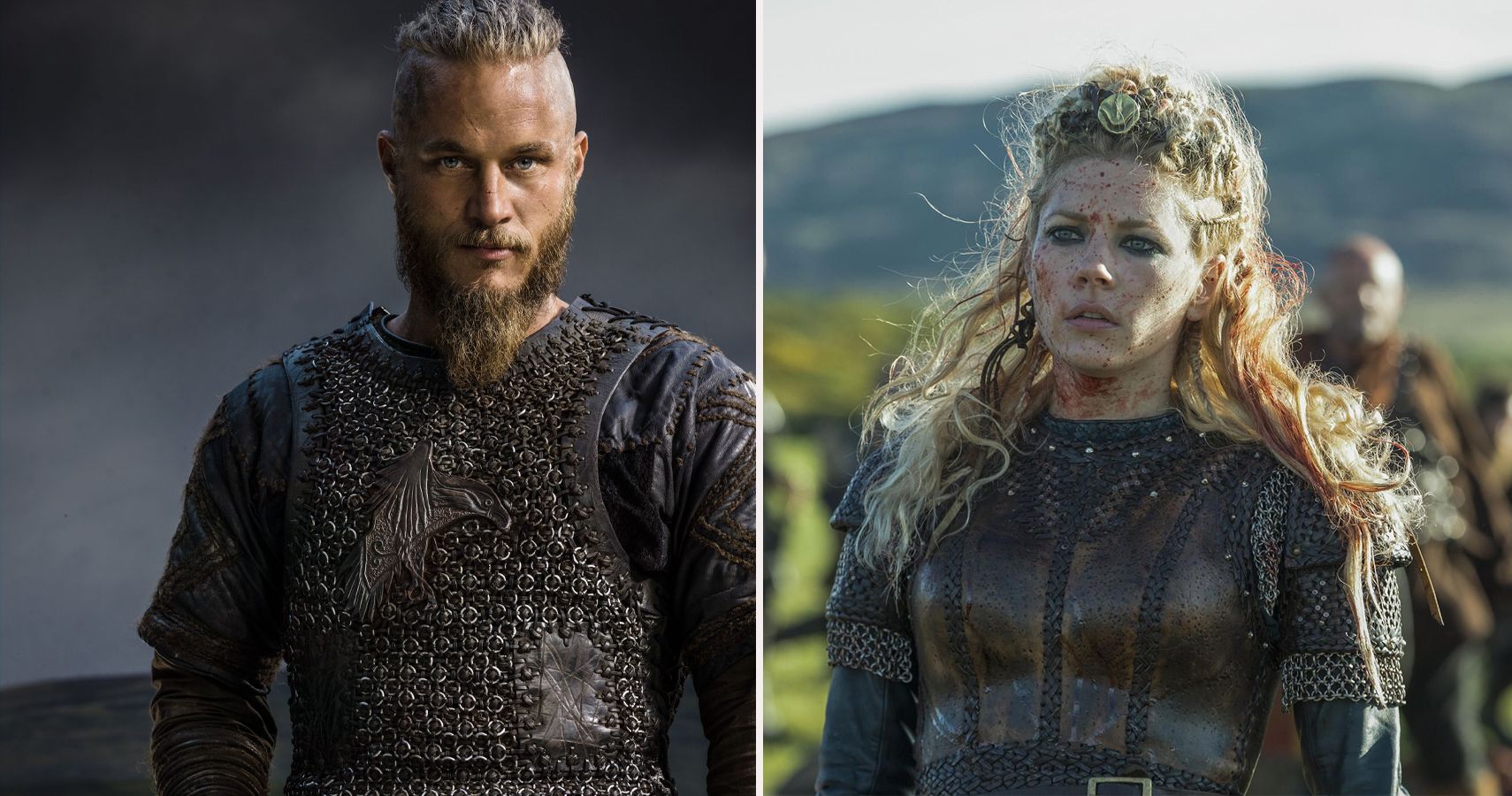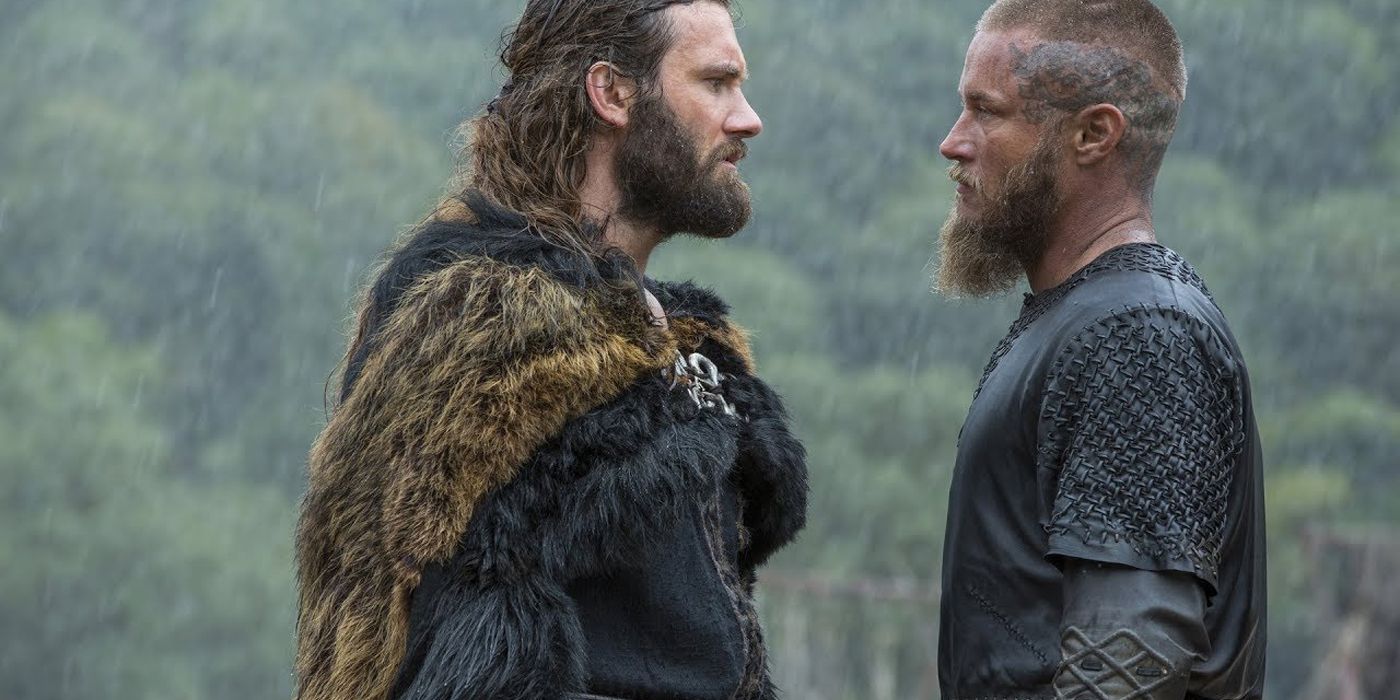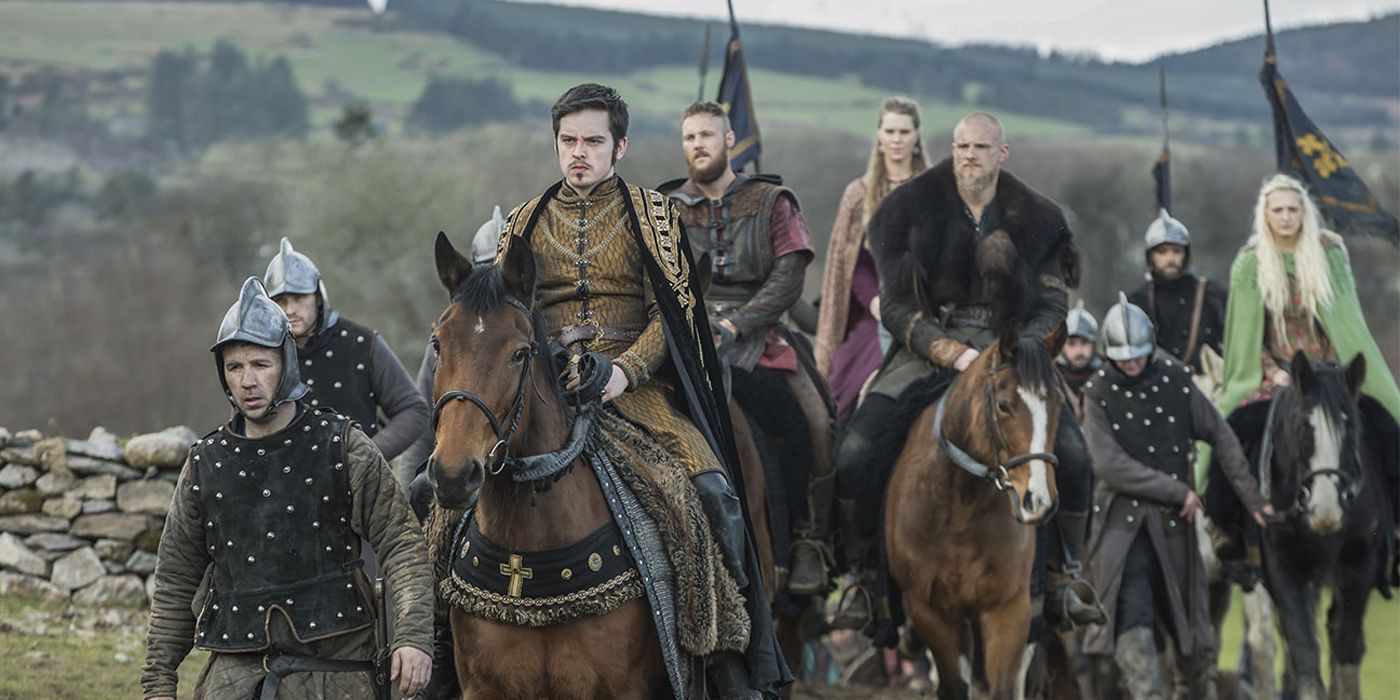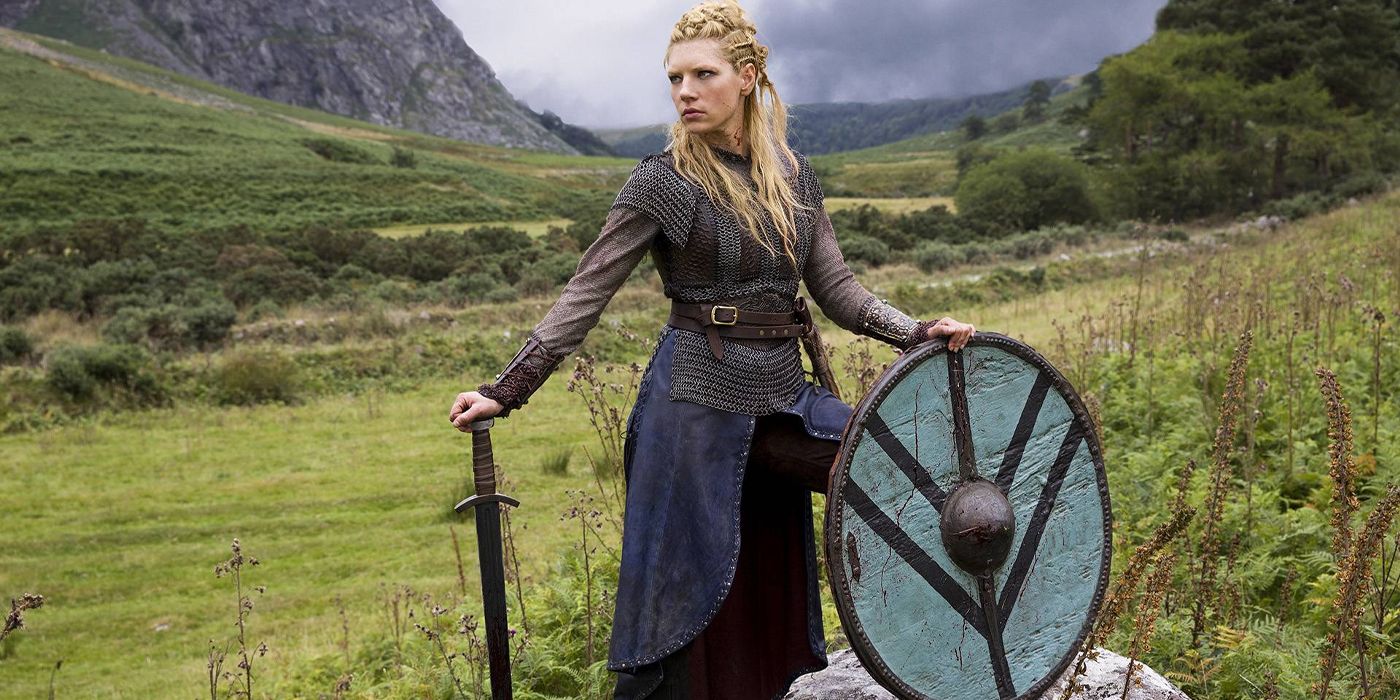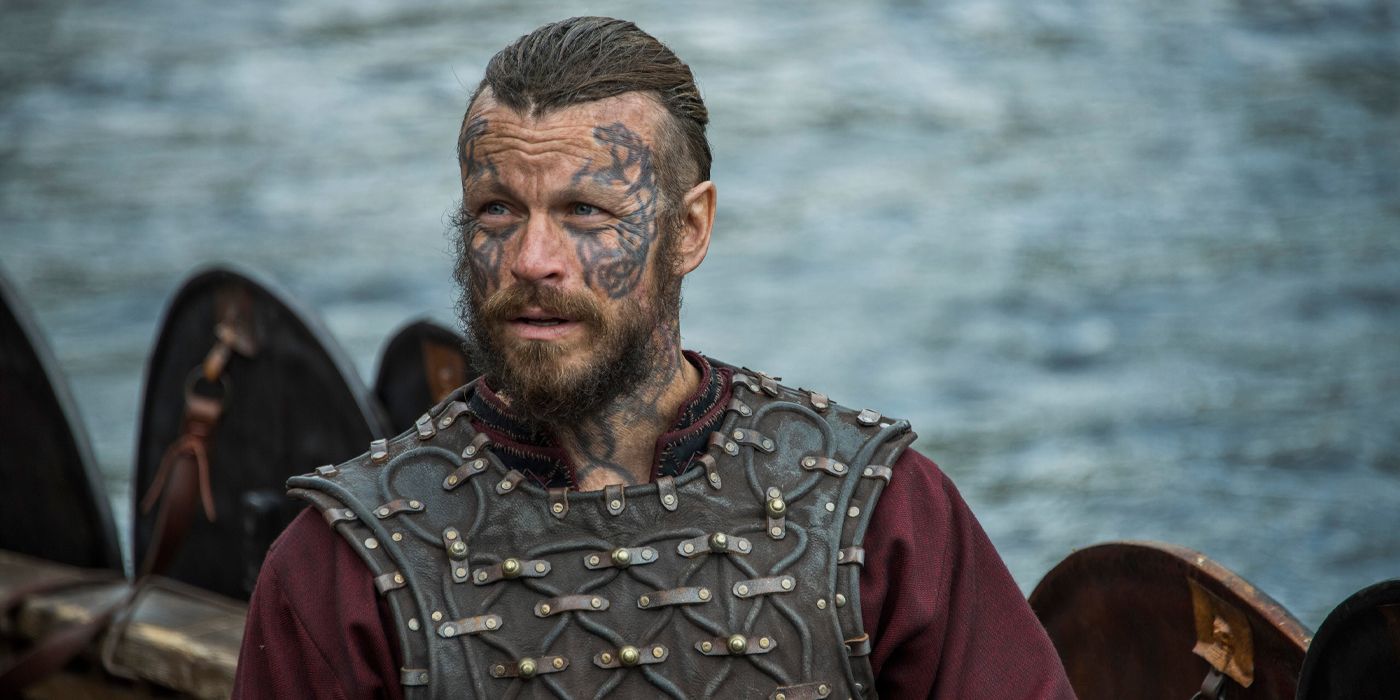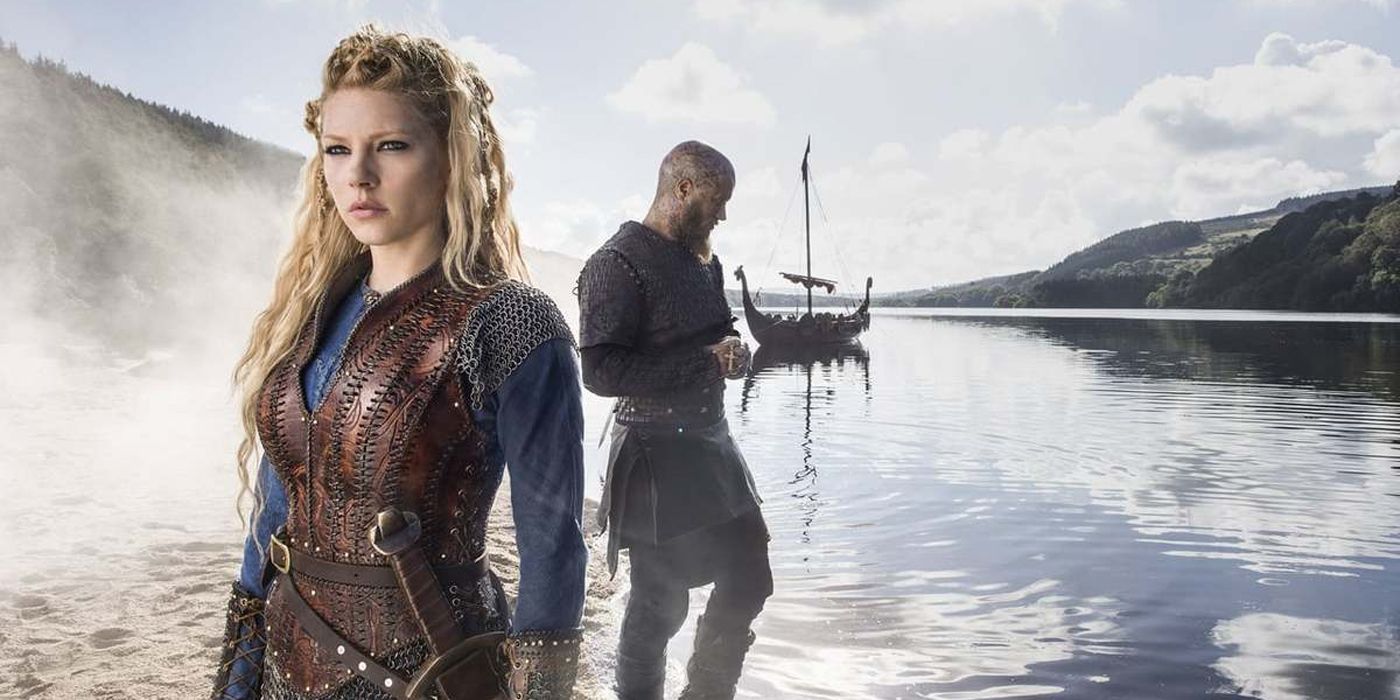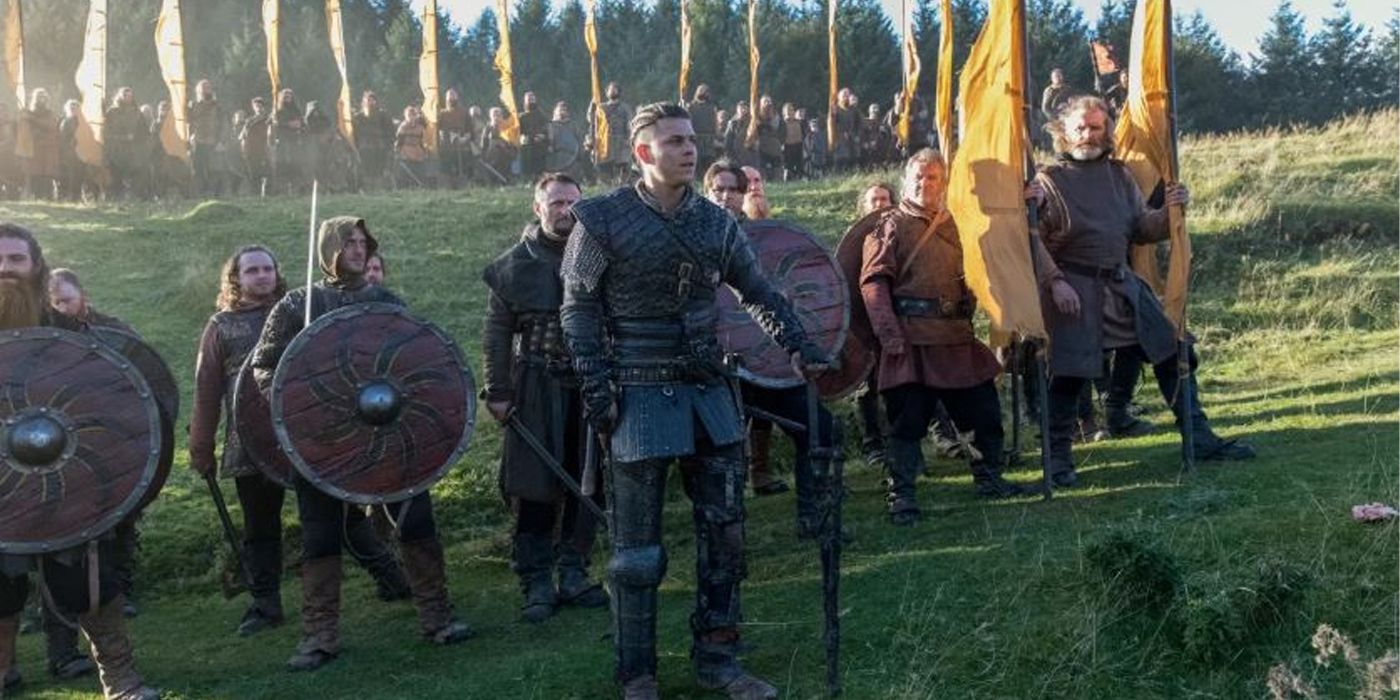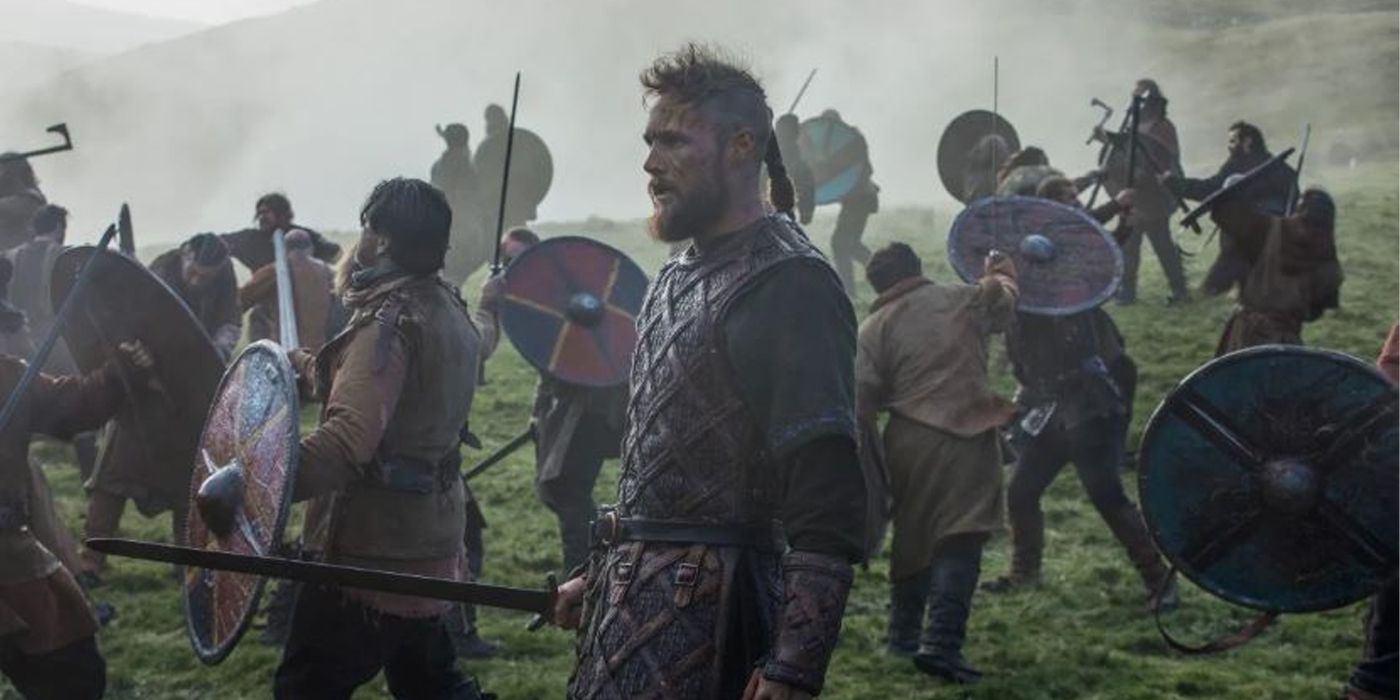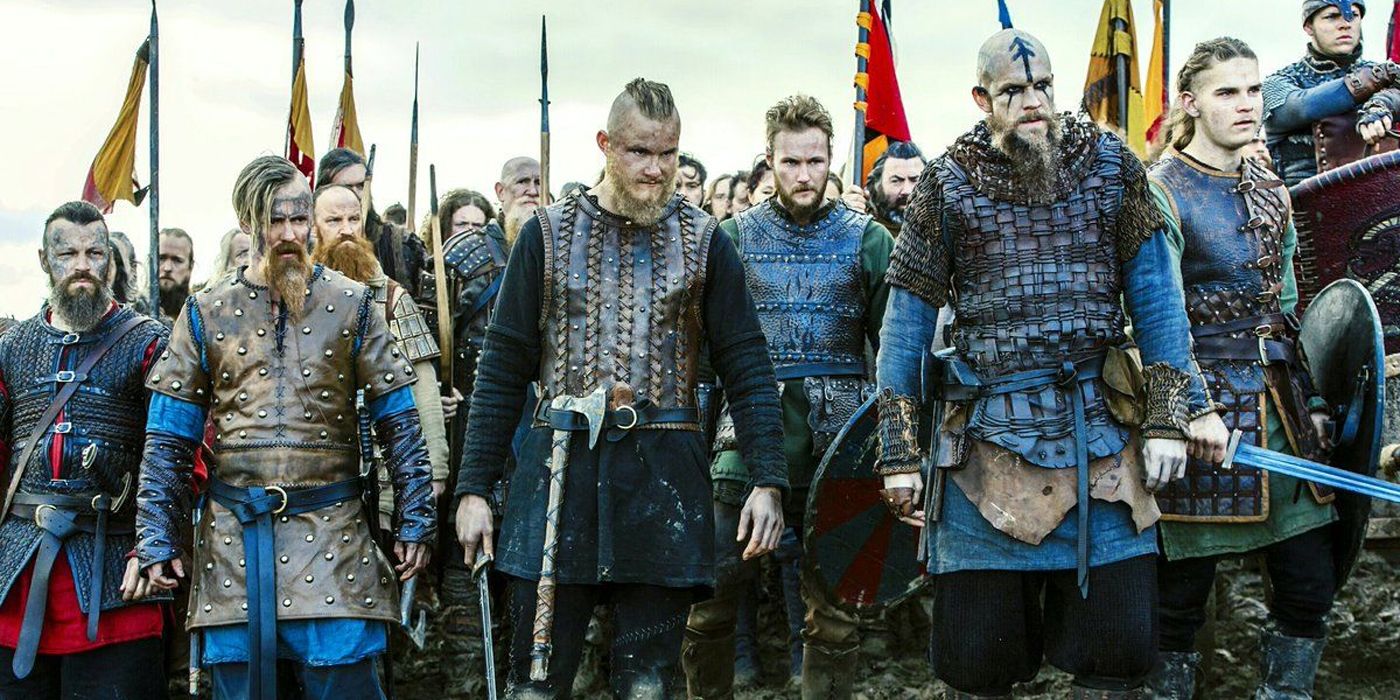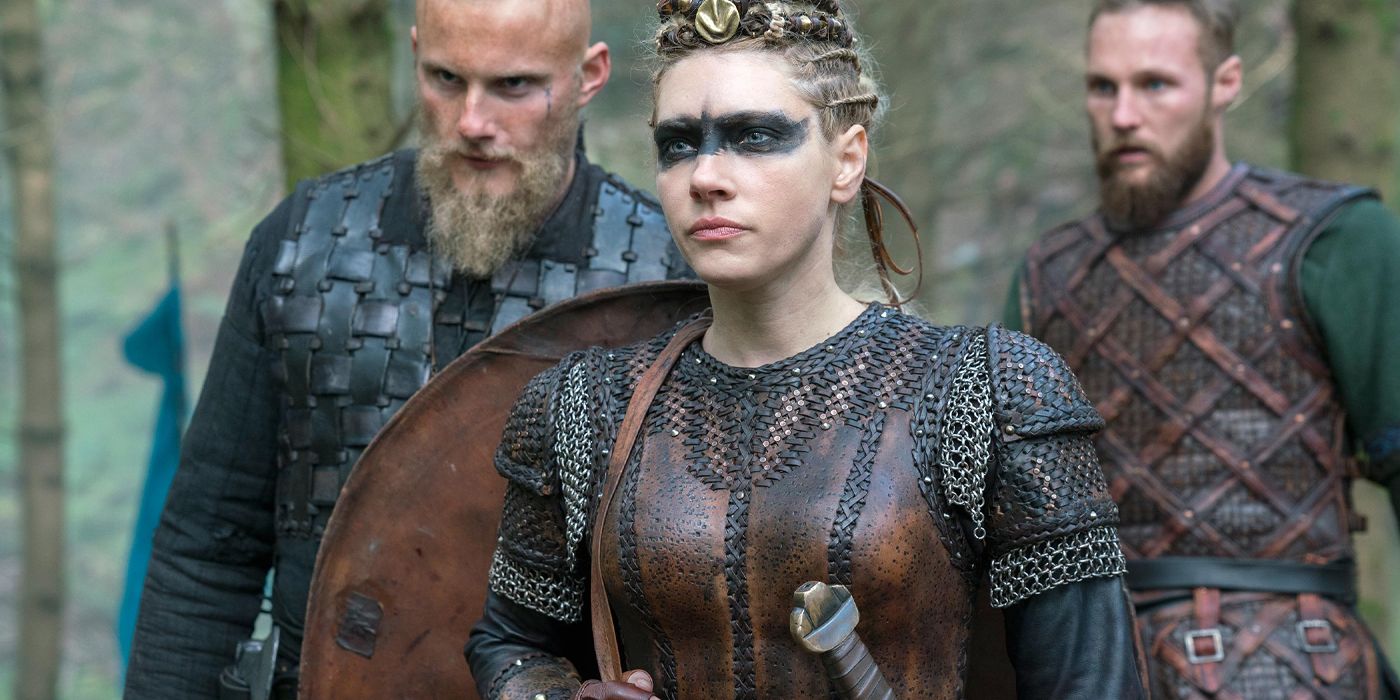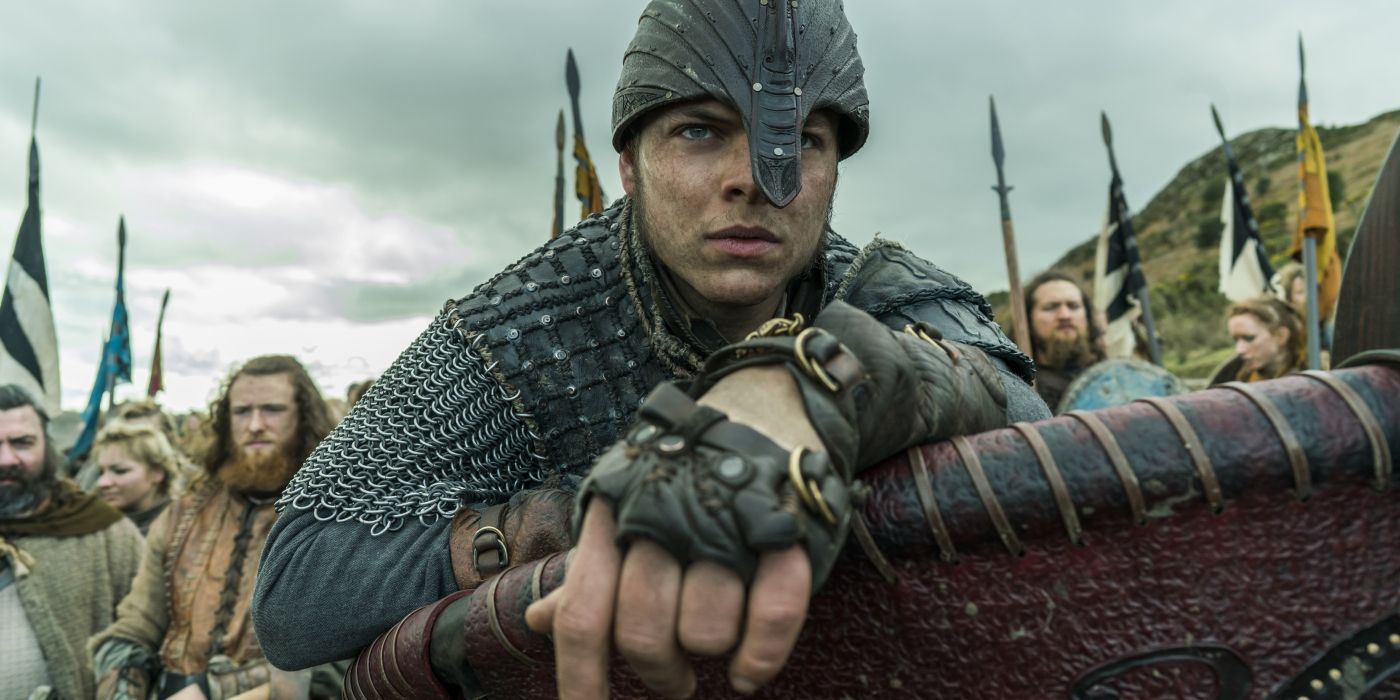One of the most important lessons that a viewer can learn from watching the long-running Vikings television program (which can be seen on the History Channel) is that many of our commonly held assumptions on the topic of the Viking people are vastly inaccurate. And though the History channels' depiction of said people is dramatized and fictionalized, it does get a lot of things right.
One of the main misconceptions that the show has sought to correct is the subject of Viking armor. When most people think of Viking armor, they think of large steel knight-like suits and horned helmets. But such things are far more popular in pop culture than in history. The below article not only ranks a selection of the armor seen within the show, but also will provide readers with a more historically accurate view of the armor that the Viking people (and other people of the time) wore.
Aesthetics Above All Else
The costume worn on the character on the right is rather simple in terms of protection. Though the leather will provide a certain level of protection from minor weapons, it would be ill-advised to wear it into battle. Though it would not provide the best protection in a battle-related environment, it was not designed to do such things.
Instead, it exists as a truly aesthetically pleasing outfit that provides the character with enough protection to carry them through their daily lives. There is just something about the all-black aesthetic that draws the eye. Though this costume would not provide the wearer with much protection should a conflict arise, it is stunning to look at.
Simple Protection
The armor worn by those walking alongside the horses is rather simple but effective. They are wearing loose and plain vests over their warmer layers. The vests are small enough to allow for freedom of movement as they travel, while also protecting the men's' vital organs in case conflict does arise. They are also sporting helmets (which very few people on this list do) which allows them to keep their necks(for the most part) and skulls protected from injury, oncoming attacks, and falls. Though one would not be too wise to wear such things during a full-scale battle as they do leave several areas of the body quite vulnerable, they will be protected should a run-of-the-mill Viking style conflict arise during their travels.
Function Meets Form
This is more of a casual type of protection that can be worn on a day to day basis but that does not mean that it won't provide the character with the protection needed should an impromptu battle arise. The chainmail is loose enough that it will not impair her movements during her daily life but will provide her core with adequate protection if needed.
Her wrists are protected and can be used to deflect attacks without risking major injury. And the rest of her clothes are light and moveable enough that she will be free to carry out her daily motions as well as being able to move swiftly should the need arise. Not the best for a true conflict on the battlefield but it will not leave her vulnerable should someone with nefarious intent approach her.
Saving The Vest For Seventh
When it comes to casual armor, a vest truly is the best way to go. Full-scale armor can hinder movement due to its weight and the restrictive nature of the materials used to make such protections. A thick and lightweight vest can truly be the best way for a person to protect their vital organs without having to sacrifice agility and/or their range of motion. Notice how the character's arms are covered with nothing but a clothing style fabric (save for the wrists.)
Though this will not provide him with any protection against oncoming attacks, he will be able to maintain his full range of natural motion. Since he is wearing such minimal protection, one can assume that he is not expecting a full-scale attack to break out any time soon. Therefore, his choice in armor is practical as it will not restrict his movements for the day he has planned but will protect him in case things go astray.
Protect Those Vitals
This is a more intense version of a similar-looking outfit seen on this character earlier in this ranking list. In the previous version of the outfit, the character was not wearing a leather vest and their vital organs were only protected by a simple chainmail top. In this version of the outfit, a structured leather vest is being worn atop the previously addressed protective chain mail. The addition of the leather provides extra protection to the characters vital organs while still preserving her full range of motion, speed, and ability to avoid/absorb attacks if necessary. This armor is best worn on someone who is training (i.e. someone who is expecting to be dealt a fair amount of blows but is not overly concerned for their life.)
Battle Ready
It is at this point in the list where more battle-focused armor will come into play. For if one if seeking to enter into a high-stakes conflict, then one must ensure that they are adequately prepared for their enemy to land a blow or two. The armor seen on the character standing before the rest of the team in the above pretty much covers their entire body. The combination of chain main and leather will keep him protected from most attacks during the battle.
Though it is worth noting that there is not a helmet in-sight. Though helmets can protect the head and neck area from oncoming attacks, it is worth noting that in doing so they can severely restrict movement for the person wearing it. A helmet can also massively reduce peripheral vision for the person wearing it and doing so can cause a helmet to be more of a liability than it is worth; especially in a fast-paced battle scenario.
Leather Is Better
As we delve further into the more battle-specific armor, we must consider the balance between protection and agility. While it is a good idea to ensure that oneself and their troops have as much of their body protected from enemy blows as possible, it is also important to ensure that their movement will not be impacted.
While, yes, a full suit of armor could protect one from most attack, one must also consider the fact that they would not be able to dodge nor attack with the same speed, accuracy, nor power as they would without said armor. But they cannot simply wander into the battle-field with no protection. Which is why the above armor is the best happy medium between these two concerns. The leather allows the character to be protected from enemy blows while still maintaining their full range of motion due to its lightweight and non-restrictive nature.
Combative Gear And Glares
Every single character in the above photo is decked out in some of the most battle-appropriate armor on this list. The leather vests and tunics will keep their vital organs safe from enemy attacks coming from all directions and their arms remain free to wield weapons and deflect attacks as needed. Though several parts of their bodies remain unprotected, the focus of this armor seems to be on the core rather than the extremities. This army has decided to place its focus on protecting their vital organs and preserving a full range of motion in their limbs. Therefore, the lack of protection for their individual extremities can be forgiven.
Ready The Troops
The costumes worn by the female character on this list are starting to feel like an evolution of each other, with the above costume being its final form. The first costume was ideal for daily wear while the second was perfect for a day dedicated to training. But this costume was designed for the battlefield. This character is wearing a full Viking-style suit of armor that will protect both her core and her extremities.
Her hands are protected by leather gloves, her wrists are protected by bracers, and her arms/torso are protected by a combination of leather, chain mail, and woven armor. This will allow her to maintain her full range of motion, agility, and speed without having to worry about leaving any part of her body vulnerable to attack.
Head To Toe Coverage
The character at the centre of this image is the most protected character on this list. Not only are they wearing a full set of relatively period-accurate armor, but they have also elected to wear a helmet. Though the helmet can, unfortunately, limit both the wearers' field of view and range of motion, it does provide some much-needed protection to the often neglected head and neck area. So if the character is in a position where the pros of wearing a helmet outweigh the cons, then they should sacrifice their range of motion for the added protection.

